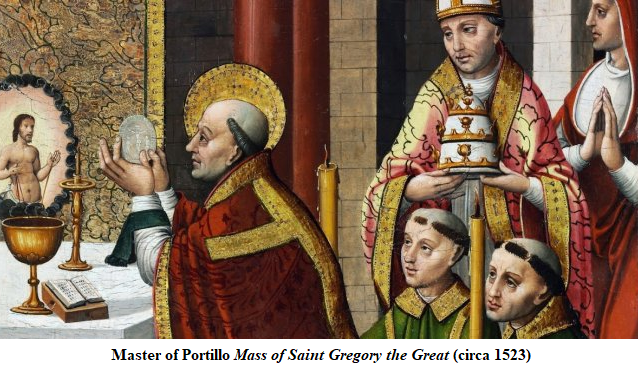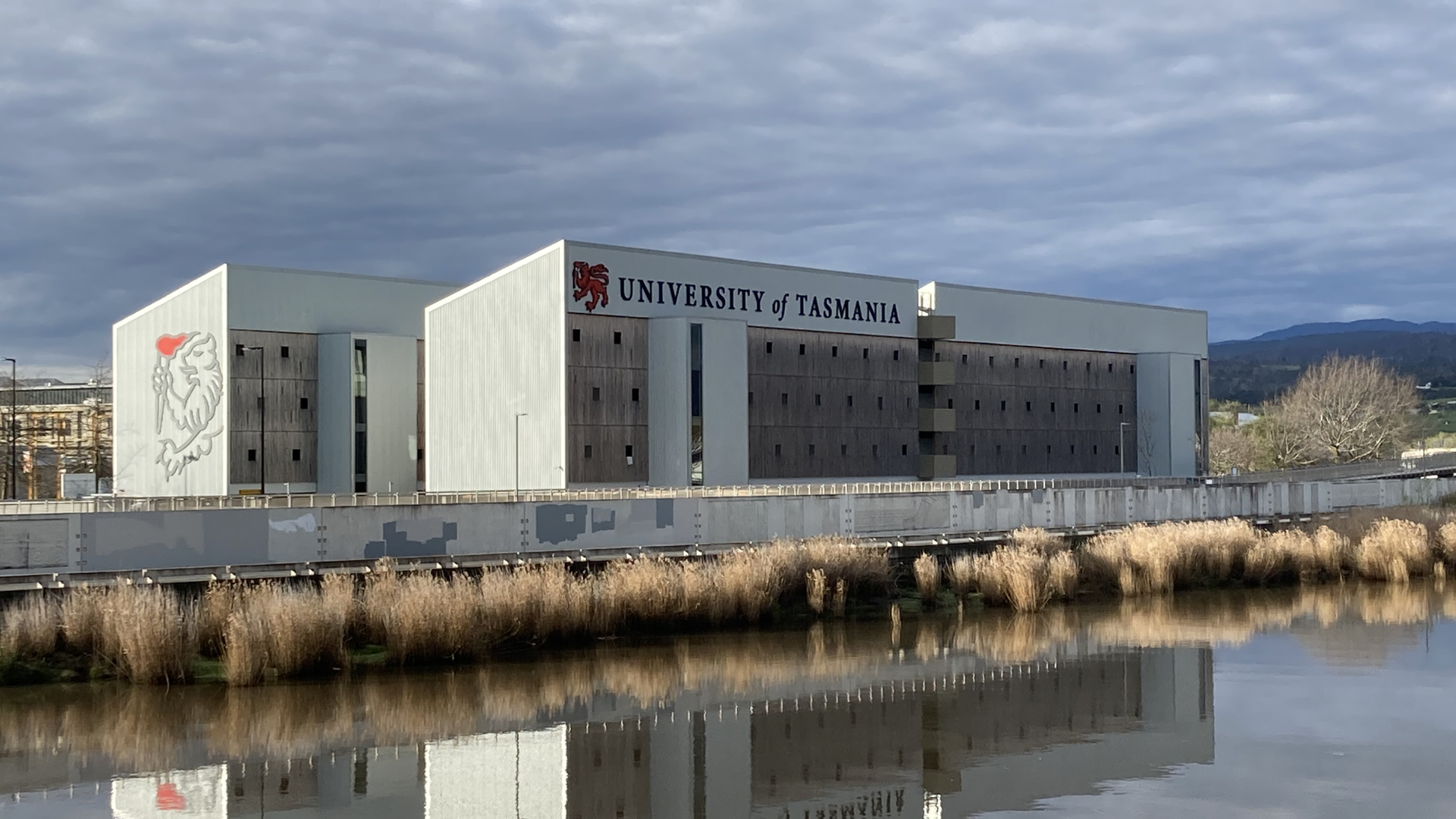
The Old Pope and the Old Mass

Pope Francis, eighty-four, in his Letter motu proprio Traditionis custodes (July 16, 2021) and in his accompanying letter to the bishops, seems to have decided that the old Mass (also known as the “Tridentine Mass” or the “usus antiquior” or the “Extraordinary Form”) must die. This form of the liturgy—described by its adherents as the “Mass of the ages”—seems to have had its future in the Church cut off; no more old-Mass personal parishes or groups can be established; the old Mass is no longer to be celebrated in parish churches (where it might be readily accessible); and no priest ordained after July 16, 2021, is to celebrate the old Mass without permission, not just from his bishop but from the Vatican itself. It’s out with the old and in with the new!
This essay appears in the latest Quadrant.
Click here to subscribe
This can’t be the full story, since it was only fourteen years ago that Pope Benedict issued the document Summorum Pontificum, in which he expressly provided for the continued and perpetual use of the old Mass, which he said had never been abrogated, and, moreover, asked that there be a reciprocal enrichment between the old Mass and the new Mass. It is unthinkable that one pope would directly contradict another pope, especially one who is his immediate predecessor and, in this case, still alive.
Further, Pope Francis has prioritised evangelisation—the growth of the Church. Since Benedict’s move in favour of some kind of liturgical restoration, there has been a tremendous release of energy across the whole of the Church, with a new enthusiasm for a nourishing Christian liturgy, for encouraging devotional life in the family, and for successfully promoting vocations to the priesthood and the religious life, across the Church as well as among those attached to the old Mass. It cannot be the Pope’s intention to cut off and cast into the fire this healthy branch of the Church.
The growth is clearly evident. The old-Mass “movement” has flourished in the last fourteen years. Most adherents of the old Mass are teenagers, young adults, married couples with young children, and those in their early middle age. These are people who have found in the old Mass a spiritual treasure of the Church which is sustaining their faith in an indifferent, if not hostile world. In fact, most of the people going to the old Mass are part of the future. Can it be that this growth is unwelcome in the Church? That it is not of the Spirit? That it must wither and die?
The old form of the Mass has sustained the Catholic Church for over a thousand years, during which time it has expanded throughout the world, survived the Reformation, the French Revolution, all the “isms” of the nineteenth century, and attracted high-flying converts (at least up to the 1960s). Why must this treasure of the Church be discarded, along with all its accoutrements, its language, its music, with all its complexity, like a highly developed organism, rich in symbolism and with many layers of meaning?
To even begin to understand the question, we must take ourselves back to the 1950s. Most of us must rely on what we are told by those who experienced it first-hand. Yes, the Church was flourishing—large congregations, seminaries and noviciates bursting with life—but in the 1950s there also seemed to be a great expectation of change in the Church. The changes of Vatican II did not come out of the blue.
The liturgy was on everyone’s minds—it was not by accident that the first task undertaken by the Council was the reform of the liturgy. Many people from the pre-conciliar era will describe liturgical horror scenes from the past: gabbled perfunctory Masses (finished in less than twenty minutes), music badly sung, altar boys mumbling nonsense for their responses, and so on. It was a mish-mash. (A good example is Cardinal Cushing’s celebration of the funeral of John F. Kennedy, available on the internet.) So liturgical change was welcomed by almost everyone. There was excitement, enthusiasm and energy given to the liturgical reforms everywhere in the 1960s. The crowds were still at Mass and everyone expected a new era of renewal and growth.
What were the differences between the old Mass and the new Mass as it eventually emerged in 1970 after a period of experimentation from about 1964? The first was, obviously, the end of Latin and the use of the vernacular throughout the liturgy. Thus, in one fell swoop, the entire classical repertoire of liturgical music was abandoned. In particular, the rich heritage of Gregorian chant was discarded—an impoverishment perhaps more obvious in religious orders than in most parishes. New music in contemporary idioms was hastily composed and rapidly disseminated. Many people would say that most of the new music of the 1960s and 1970s (and later) lacks enduring aesthetic value, but many others are attached to it, particularly older people who were young at the time. Music had never been a strong element in Australian Catholicism, so we are told, but it also seems that before Vatican II, many parishes had active choirs and some of them sang music of a high standard. They all fell silent and most of them were quickly disbanded. They were replaced by half-hearted congregational singing—where there was any singing at all—but for the first time the people did join in the responses, in the vernacular.
Second, new free-standing altars (many portable but never, in fact, moved) were introduced and the celebrant faced the people. The scholars stated that this was a return to the primitive way of celebrating Mass, as evidenced in many Roman basilicas, including St Peter’s in Rome. Other scholars have pointed out that the governing principle in these cases was praying towards the east or even towards the open door (the practice in the classical world) rather than “facing the people”. In any case, it has also been suggested that the congregation all turned to face east during the prayer, with the celebrant behind them. This orientation (towards the east) was maintained in new churches, but with the priest in front of the congregation. Most of the early Anglican churches in Sydney are oriented, following ancient Catholic tradition, towards the east. The idea that the celebrant must always face the people seems to have been based on a mistake.
Nevertheless, the proposal to restore ancient usage and to have the priest and the people all facing (at least the liturgical) east, is usually met with stiff opposition. The priest “is turning away from the people”. The focus on the priest and his face and what he is doing has become the essential experiential aspect of the Mass (together with automatically receiving Holy Communion). The choreography of Mass in the round very quickly determined the design of new churches, some even built before but anticipating the liturgical reforms (Liverpool Cathedral in the UK was completed in 1967 but designed before 1962). In most Catholic churches of the traditional design, use of the remaining sanctuaries and altars (and the pulpits) is resisted with a preference for new arrangements which always look temporary and, often, quite out of place.
In the past and even in non-liturgical prayer, physical posture varied. There are photos of families praying the rosary at home, where parents and children do not kneel facing each other, but in a circle facing outward. Sydney evangelicals customarily had prayer meetings, with all kneeling, facing into the chairs in which they had, moments previously, been seated, facing each other. Before the Second World War, during parliamentary prayers, the members of the House of Commons all faced the walls behind them rather than each other. On the other hand, there is also a tradition of celebrating the divine office in choir, with two sides facing each other, as in cathedrals, religious communities and college chapels. There is probably no absolutely right or wrong way of doing these things.
The orientation of the priest and of the congregation, however, has a great effect upon the spiritual dynamics of the liturgy. When Mass is celebrated facing the people, there is a huge focus on the priest. Most of the congregation face the backs of other people, or at least their sides. It is the priest they face. The priest, on his part, is facing everyone in the congregation. It is not surprising that a burden of “making things work” falls on the priest: the performer in front of an audience or (in these Covid times) a camera. Inevitably, because of the physical arrangement, the default mode of the congregation is passive, the priest is active. At best, it is about community and finding God in our midst, but the risk of the liturgy being mere entertainment (of which there are many examples on the internet) is always present. There seems little space or time for the transcendent God.
The reform of the liturgy after Vatican II brought mixed reactions. To begin with, there was enormous enthusiasm, but somehow, since then, the reformed liturgy has become rather tired. The new has mostly proved ephemeral in its appeal, and attempts to revive the classical liturgical musical tradition have been thwarted by resistance to the use of Latin, even just for singing. Congregations have abandoned or forgotten the old gestures of reverence—silence in church before Mass, genuflections, kneeling, recollection and thanksgiving after Communion.
Further, the transition from Latin to English has been awkward. Neither the first nor the second English translations has really worked. Hampered by a (selectively) literal translation from the Latin, the present translation is clunky and its meaning in places is opaque, although in many respects it is an improvement over the terseness and functionality of the first translation. Now that language has become so politicised, a third translation is unlikely, at least for some time.
Attempts by the clergy to welcome people to Mass by making the liturgy more informal and inclusive can be alienating for many people. In many ways the Mass has become a convivial gathering, thereby losing some of the seriousness of the demanding austerity of the old Mass with its long periods of silence and an intensity which is completely absent from the modern liturgy. The relaxed atmosphere of a modern liturgy can give the unintended impression that it does not really matter much—so, just come when you feel like it.
While very few people in the mainstream Church would seem to want to return to the pre-conciliar liturgy, very few seem to feel any real incentive to attend the post-conciliar liturgy. Mass attendance has been in free fall in the last few decades across the developed world. Although there are many reasons for the seeming collapse of Christian faith, something has also gone wrong with the liturgy. A lot of people are no longer finding in it a connection between their lives and God.
It is in this context of decline of and spiritual desiccation in the Church, that a cohort of younger Catholics, with a view to the future, have found in the traditional Latin liturgy, of which the old Mass is the centre and the crown, the means to confirm, support and sustain their faith. This phenomenon is worldwide, although it has a greater presence in some countries, particularly France, the United States, Germany, Austria and Switzerland. In many places it is expanding. The old Mass is attended by young people, most of whom will be or are married and wish to raise their children in that spiritual environment. Those who, because of work or family involvement, have to move away from the old Mass communities, take with them a spiritual experience which assists them to contribute to their local parishes. There is no doubt that many young people find in the old Mass an experience of God.
So, to return to our question, why is the old Mass to be done away with? There is some criticism, and this is at least implicit in the Pope’s letter accompanying the latest motu proprio, that adherents of the old Mass are generally on the Right of the political spectrum as well as conservative theologically. This would seem to be a criticism of the Right and of conservatism, with the implication that one cannot be a Catholic and have these views. Whether or not this is true, there is no necessary connection between the old Mass and any particular set of views (except, perhaps, about the liturgy itself). Dorothy Day, the founder of the Catholic Worker Movement, had a deep love of the traditional Latin liturgy. The Anglo-Catholics of the English slums combined gorgeous liturgy with community housing projects and advocacy for the poor. The younger members of the Order of Malta in Sydney have in the recent past combined celebrations of solemn Masses in Woolloomooloo with practical work with St Vincent de Paul. There is no reason why the old Mass cannot nourish or be attractive to a person of the middle ground or of the Left, politically and theologically. Living in a spiritual and liturgical environment firmly based on tradition provides a sound foundation for social, political and theological thinking which can challenge the world, from both ends of the political spectrum.
Further, doing away with the old Mass does not seem consistent with the rights of the faithful as provided for in the teachings of Vatican II. In the Catholic Church, each member is guaranteed the right to follow their own form of spiritual life, “providing it is in accord with Church teaching” and, of course, the form of the liturgy is not a matter of teaching but of discipline. Likewise, the faithful have the right to be assisted by their pastors from the “spiritual riches” of the Church, and these spiritual riches include all that we have from the time of Christ himself until now—in Scripture, the Fathers, the great theologians and spiritual masters, the artists (musicians, poets, painters, builders), the Councils and the popes. The purpose of all this is to have an experience of God and to make God real for the world. In these things, there is always, in the Christian faith, an evangelistic impulse.
The Pope, by essentially sending the message to a large number (albeit perhaps not a large proportion) of his flock that what they have experienced and wish to hand on to their children is of no value and must, in fact, be expelled from their memories and that of the Church, has made a mistake—and one says this with, of course, the deepest respect for the office of the Papacy. It may have been wiser to have sought a more effective way of fulfilling the wish of Pope Benedict that the two forms of the liturgy provide a mutual enrichment, whereby the vernacular Mass of St Paul VI becomes more transcendent and includes the best from the past as well as from the present of the liturgical tradition, and the Mass of St Pius V becomes perhaps a little simpler and with a greater integration of the vernacular, much according to the intention of the Fathers expressed in Sacrosanctum Concilium.
The implementation of Traditionis custodes has been largely put in the hands of the guardians of tradition, the diocesan bishops (although they have been deprived of any discretion regarding pastoral structures for adherents of the old Mass or to allow new priests to celebrate the old Mass). It is to be hoped that they will exercise their responsibilities, albeit limited, with a true discernment of what is best for the future of the Church.
Richard Waddell is a Priest of the Personal Ordinariate of Our Lady of the Southern Cross, working in the Archdiocese of Sydney
Madam: Archbishop Fisher (July-August 2024) does not resist the attacks on his church by the political, social or scientific atheists and those who insist on not being told what to do.
Aug 29 2024
6 mins
To claim Aborigines have the world's oldest continuous culture is to misunderstand the meaning of culture, which continuously changes over time and location. For a culture not to change over time would be a reproach and certainly not a cause for celebration, for it would indicate that there had been no capacity to adapt. Clearly this has not been the case
Aug 20 2024
23 mins
A friend and longtime supporter of Quadrant, Clive James sent us a poem in 2010, which we published in our December issue. Like the Taronga Park Aquarium he recalls in its 'mocked-up sandstone cave' it's not to be forgotten
Aug 16 2024
2 mins







